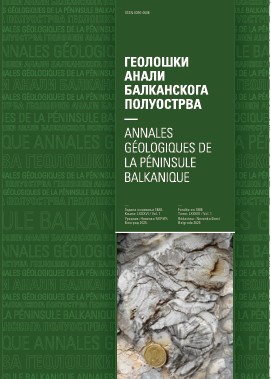New paleomagnetic results for Tertiary magmatic rocks of Fruška Gora, Serbia
Abstract
Fruška Gora Mountain is a large scale antiform located at the southeast part of the Pannonian Basin between the Danube and Sava Rivers. It is built of Paleozoic and Mesozoic rocks with Neogene sediments on all sides and at the flanks. The Paleozoic and Mesozoic rocks are largely metamorphosed (age of the metamorphism is early Cretaceous) and they are intruded by Eocene/Oligocene latites and rhyodacites and Badenian basaltic trachyandesite. On Fruška Gora two major structural units are observed, the northern and southern structural units which are divided by the Srem dislocation striking NNW-SSE. The Tertiary magmatic rocks located on both sides of this dislocation were the subject of paleomagnetic analysis. Tectonically meaningful paleomagnetic directions are obtained from latites and rhyodacites, while basaltic trachyandesite has a secondary remanent magnetization. The obtained overall-mean paleomagnetic direction, after applying the correction for the general tilt of the Lower Miocene sediments, suggests a clockwise rotation (D = 210°, I = -45°, k = 21, α95 = 14°) of 30° with respect to the present North of blocks on both sides of the Srem dislocation. The fact that close to the end of Miocene-Early Pliocene Fruška Gora rotated in a counterclockwise direction for 40° with respect to the present North means that all of Fruška Gora rotated in a clockwise direction for 70° with the respect to the present North in a short time after the intrusion of Eocene/Oligocene magmatic rocks and before Middle Miocene.
Copyright (c) 2022 Geološki anali Balkanskoga poluostrva

This work is licensed under a Creative Commons Attribution 4.0 International License.










